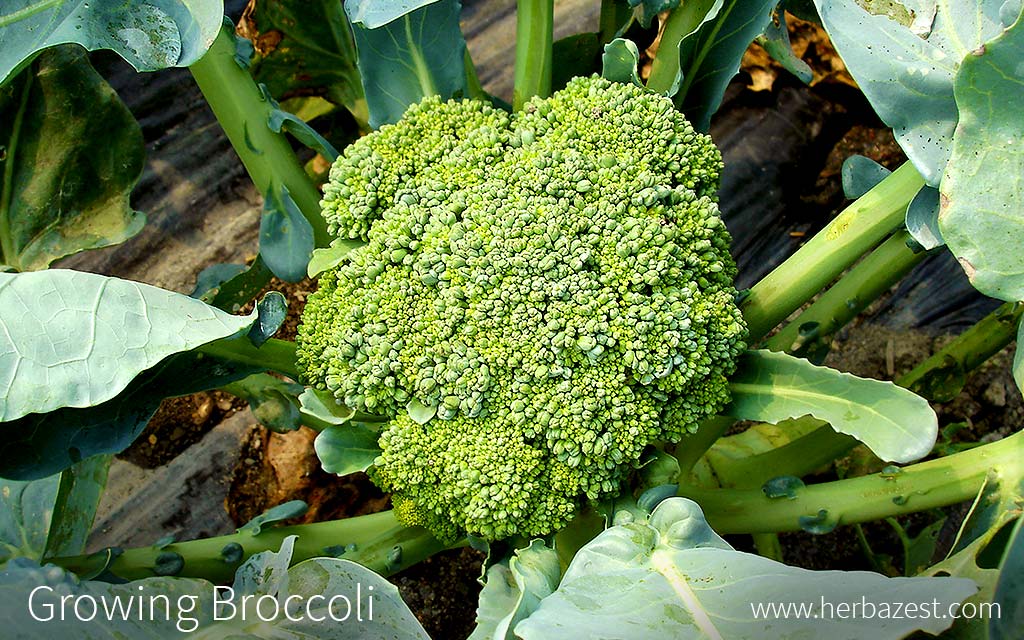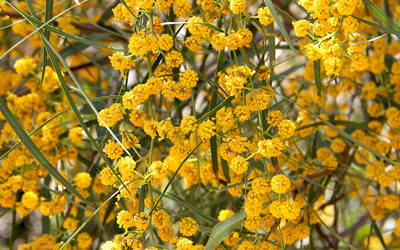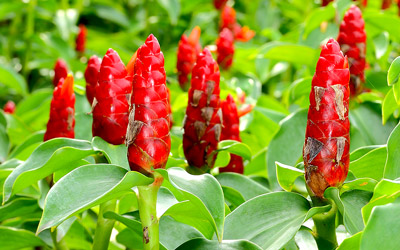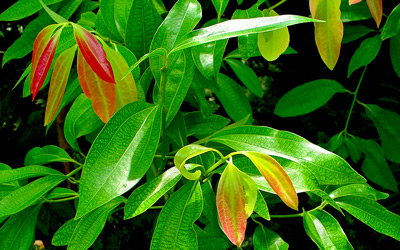Broccoli can be grown in many different climates, however it thrives when subjected to cooler temperatures. Not only this but other broccoli growing conditions, such as soil type, irrigation, and access to sunlight will influence its development and nutritional content.
1. Preparing the Soil
Soil should be nutritious and well-drained. It should be sandy to clay loam, and ideally of pH level 6.0 - 6.5. Application of a layer of organic mulch is suggested to help ensure the soil retains moisture, and this can also be helpful for supplying additional nutrients.
Broccoli is hardy to cooler temperatures, however it prefers a position in full sun. It requires a minimum soil temperature of 40°F(4.5°C) to germinate, and then will succeed best if subjected to a soil temperature ranging from 65 - 75°F (18 - 24°C) throughout its growth cycle.
A soil test should be performed beforehand, as broccoli is sensitive to nutrient deficiencies, particularly boron, and the lack of this compound may stall plant development.
The garden bed should be prepared by tilling the soil to a depth of 12 - 15 inches (30 - 38 cm). A two to four inches (5 - 10 cm) layer of compost or a 5-10-10 fertilizer can be mixed into the soil before planting. If there is not enough of boron in the soil, borax powder can be added.
2. Planting
Planting Broccoli Outdoors
Seeds can be sown indoors six to eight weeks before the last spring frost and be transplanted outside three to four weeks later for an early summer harvest.
It is most common to propagate broccoli from seed; however, it is also possible to do so from cutting. Either should be planted around 12 - 18 inches (30 - 45 cm) apart. Seeds should be sown between 0.40 - 0.79 inches (1.25 - 2 cm) below the surface of the soil, which should be thoroughly moist.
If planting seeds, it is recommended to do it in early spring - usually late February to early March. Seedlings can be transplanted to a site outside in this same time period, or in autumn if they have been propagated inside.
It is possible to harvest broccoli twice and even three times a year by planting different varieties, depending on the hardiness zone. While some broccoli cultivars, such as 'green valiant' are better planted in late spring, others - like 'spring green mix'- are best suited to be moved outside in late summer.
Regardless of the cultivar, broccoli plants are likely to suffer during the midsummer heat, so care must be taken to provide them partial shade until harvest.
Planting Broccoli Indoors
It is a popular practice to begin planting broccoli in pots and transplant the seedlings outside when the weather is suitable. However, fully growing broccoli indoors is also possible, as long as some basic conditions are met.
For an adequate germination and development, broccoli needs at least six hours of full sun every day, so it should be positioned either in a green house, sun room, or on a window sill - where there is abundance of natural light.
The seeds should be sown in individual containers that will need to be watered regularly so the soil is consistently moist. A good drainage system is important in order to avoid waterlogging.
When growing inside, the whole growth process is usually between two and three weeks longer than it would be outside.
3. Plant Care
Watering
The broccoli plants should be watered every 10 to 14 days during dry periods, enough so that they keep a consistent level of moisture. This is particularly important when the heads starts to develop.
Overwatering should be avoided at all times, since it can stop seedlings from developing as well as to cause disease problems, such as root rot and damp off.
Fertilizing
It is advisable to carry out a soil test in order to determine whether it is deficient in any minerals at any time of the plant's development. Usually, a nitrogen-based fertilizer - either liquid or granulated - is required to help stimulate broccoli's healthy growth. An application is advised when broccoli is first planted, then again around one month into the growth period, and finally few weeks before it is harvested.
Pruning
It is recommended to pruned, or “pinch" broccoli regularly throughout its growth. To promote the development of one large head with many florets, it is suggested to remove any small shoots that appear on the stem. Alternatively, it is possible to stimulate the growth of several medium-sized shoots - leading to multiple florets - as long as the main large head is cut away when it first starts to develop.
Weed Control
Like most Brassica species, broccoli is frequently affected by the presence of weeds. Hand-removal is an effective way to deal with these. While it is also possible to use an herbicide, this is only recommended for established plants, as the harsh chemicals can be harmful to young seedlings.
It is important to thoroughly wash any vegetation before consumption, particularly if a chemical-based weed killer has been used.
4. Pest & Disease Control
Pests
Broccoli is attractive to many insects, most commonly caterpillars, cabbage worms, cabbage aphids, and flea beetles. These tend to be more apparent on autumn crops rather than in the spring varieties, which is perhaps why many gardeners prefer to cultivate broccoli at the start of the year. It is important to remove infested areas in order to limit spread, and also use a pesticide to discourage their reappearance.
Diseases
Most of the common diseases known to affect broccoli, are caused by fungi. These include root rot, downy mildew, and Alternaria leaf spot - all of which are due to the presence of fungi. Broccoli can usually withstand these infections, however it is best to remove infected areas as soon as possible in order to limit damage and spread.
Waterlogging and damp foliage must be carefully avoided in order to reduce the chances of such diseases occurring. Irrigation should be applied at soil level, and plants should have access to full sun - allowing all foliage to thoroughly dry each day. It is also important to keep a well-drained soil.
Wildlife
Many birds are known to feast on broccoli and other similar vegetation, which is the reason why many farmers use scarecrows or other bird-scaring mechanisms - such as mirrored ribbon. However, the most effective solution for home gardens is covering plants with fleecing or mesh. Mesh is often the preferred option because it has less of an impact on the plants' access to sunlight.
5. Harvest
Broccoli should be harvested before the buds of the florets develop into flowers. The growing process usually takes between 60 and 100 days, depending on the conditions the plant is subjected to.
The central head should be cut with around five to six inches (12 - 15cm) of stem included, and then the remaining side shoots will usually grow several smaller heads. When these have developed to the desired size, they can be harvested for several weeks more.
6. Storage
Broccoli heads are better consumed immediately after being harvested, as they will not last for long unless they are stored in a cool environment, such as a refrigerator. An optimal temperature to store broccoli is 32°F (O°C); however, when stored at 41°F (5°C), broccoli heads can last for up to 14 days.
The best way to reap all the nutritional benefits of broccoli is consuming it fresh. However, those who wish to use broccoli in herbal preparations can either thoroughly dry it in the oven - at a constant temperature of 140 - 150°F (60 - 66°C) - or submerge the crushed parts of the plant into a solution of alcohol to make a tincture. In these forms broccoli will last for several years.
Broccoli is a popular crop among novice and experienced gardeners, not only because of its great nutritional value, but also due to its hardiness and easy care. With some awareness of its preferred conditions, it is possible to procure significant yields of this tasty and healthy vegetable.





